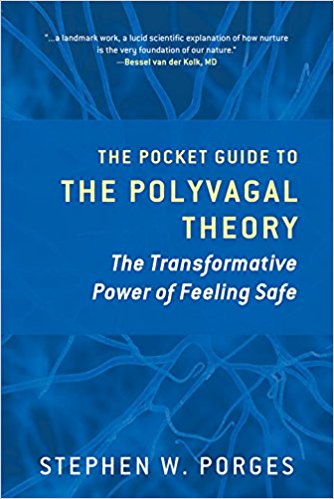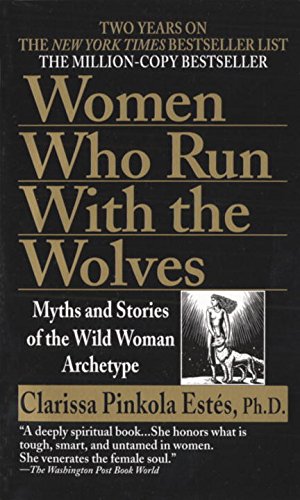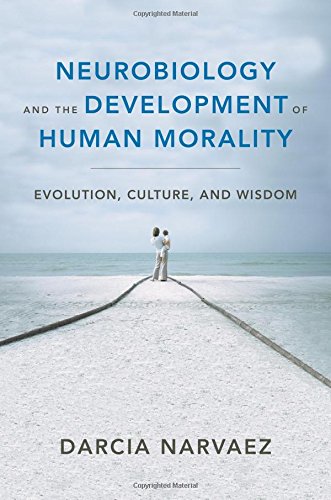Stories That Heal Primal Wounds – Part 6
We all need stories that heal our spirits and get us back on track.
Primally wounded people often feel betrayed by their selves, their bodies, their weaknesses. They get overwhelmed with fear or paralysis and cannot move forward. They can latch onto a rigid script for their lives or float without specific goals. Their confidence in themselves and their unique life purpose becomes shaky. They lose their way on the path to becoming their best selves. Here are narratives that can jar us loose when we get mired in these traps.
Your Strong, Smart Body
 Traumatized individuals often feel like their bodies betrayed them—Why did they become passive or paralyzed? Adults feel like others blame them for not “fighting back.” They almost blame themselves for being traumatized. They are ashamed of their ongoing physiological reactions. They can’t relax around others. They have no trust. They continue to withdraw, feeling threatened by social interaction. Desensitization techniques only make things worse as patients in these cases cannot control their extreme physiological reactions. They shut down. Even though their therapists encourage them to become more social, their bodies resist. And so, they feel ashamed and blamed.
Traumatized individuals often feel like their bodies betrayed them—Why did they become passive or paralyzed? Adults feel like others blame them for not “fighting back.” They almost blame themselves for being traumatized. They are ashamed of their ongoing physiological reactions. They can’t relax around others. They have no trust. They continue to withdraw, feeling threatened by social interaction. Desensitization techniques only make things worse as patients in these cases cannot control their extreme physiological reactions. They shut down. Even though their therapists encourage them to become more social, their bodies resist. And so, they feel ashamed and blamed.
Stephen Porges (University of North Carolina—Chapel Hill), whose polyvagal theory has become popular among clinicians, has a different take. He tells us to celebrate the success of our body’s ability to navigate and negotiate dangerous situations, like life threat, by shutting down—and keeping us alive! We should respect these involuntary reactions of our nervous systems that put us into a state that enabled us to survive the trauma. But it is true that once in that state—immobilization and social withdrawal—it’s not always easy to get out of it. And situations and memories may keep triggering that state. But the first step is understanding that our bodies protected us. They did us well! This good story is the place to start. We can understand our survival as a “glass half full” instead of a “glass half empty.”
Restoring the functioning of the myelinated, mammalian vagus, our social engagement system, is what is needed. Various techniques that increase breathing with long exhalation (such as singing or “om” meditation) stimulate the parasympathetic system enabling us to practice regular “calm downs.”
When trauma is experienced when we are very young (which happens routinely to USA newborns these days with separation from mother and painful procedures like circumcision), we can become conditioned to habitually subconsciously shut down socially—it can become a personality trait, meaning that we routinely brace ourselves against others instead of being open to them. Similar methods of self calming (singing, vocal meditation) can be used to help ourselves move away from social withdrawal and towards greater social engagement. I also recommend physical social play (like tag) because it also makes you breathe more deeply and grows all sorts of skills (like paying attention to your partner’s reactions, stopping and shifting action).
Thank your body for protecting you. Treat it kindly. It’s on your side.
Your trauma has given you unique insights that can help others. Accept the trauma, find the positive things you learned and use those insights to guide your path ahead.
The Spirit of Wild Women
 Clinician Clarissa Pinkola Estes wrote a powerful book, Women Who Run with Wolves. Women have special powers of creation—they can grow and nourish children with their bodies. They also pick up on social cues more easily as children than do boys (boys raised in civilized nations anyway). Their powers of perception and intuition, when well developed, guide them wisely. But often, women in male-dominated societies have often borne the brunt of oppression and the suppression of their intuition and its development. (95% of human history was spent in small-band hunter-gatherer societies which are fiercely egalitarian where no one bosses anyone else.) And, in modern societies, the wise elders that traditionally guided younger persons’ development have largely vanished from the social landscape.
Clinician Clarissa Pinkola Estes wrote a powerful book, Women Who Run with Wolves. Women have special powers of creation—they can grow and nourish children with their bodies. They also pick up on social cues more easily as children than do boys (boys raised in civilized nations anyway). Their powers of perception and intuition, when well developed, guide them wisely. But often, women in male-dominated societies have often borne the brunt of oppression and the suppression of their intuition and its development. (95% of human history was spent in small-band hunter-gatherer societies which are fiercely egalitarian where no one bosses anyone else.) And, in modern societies, the wise elders that traditionally guided younger persons’ development have largely vanished from the social landscape.
As a result, we no longer know the stories that guided our ancestors. We don’t know how to manage our spirit’s needs for growth and unique expression. We fall into the traps of shutting ourselves down with superficial distractions (looks, possessions) or doing for others until our own spirits dry up.
Estes’ book is full of stories and mythologies set to inspire women to unleash their feminine powers. (She also has many CDs of stories.) But the stories can work for men too, like the fairy tale, “The Red Shoes.”
In “The Red Shoes,” a poor little girl finally succeeds in making her own shoes, red ones, from rags. She is very proud and happy. But then an elderly woman in a gilded carriage comes along and invites her in, taking her home to remake her life. The woman pilfers the homemade shoes and burns them, making the girl sad, a sign of soul-smothering. When it comes time for her confirmation in the church, the woman takes the girl to a shop for new shoes. The woman does not see very well so doesn’t realize that the girl selected red rather than black shoes. The child is expected to conform to the rules of the (church) community but her red shoes are shocking. When the woman realizes what happened she puts the shoes on the shelf. Eventually, the girl cannot resist putting on the shoes and, when a devilish character suggests it, she starts to dance, and dance, and dance. Eventually she loses control over the shoes. She cannot get them off and they keep dancing. The dancing goes on and on until finally she begs the executioner to cut off her feet.
The story represents how one’s soul, one’s creativity, can be thwarted to such an extent that one’s intuitions about fulfilling creative actions become distorted, leading to overcompensation and addictions of one kind or another, as the soul tries to express itself.
What the dire outcome (cutoff feet) signals though, is the new beginning that the soul requires. Despite what looks like tragedy in a tale, at the psychic level it often represents a new beginning. Now the girl can follow her spirit’s path with new insight.
“The Handless Maiden” is another such tale of the psyche’s various characters (portrayed as father, mother) betraying the deeper feminine nature whose innocent tears protect her and who follows new path that leads to redemption (and new hands).
Reading such stories can enrich our dreams and alert our spirit to our interest in growing and listening to the soul’s voice and following its guidance.
Fear and Fearlessness

Fearlessness is a primary virtue in wisdom traditions around the world. When the self is in the state of love, there is no fear. Instead we are whole and compassionate. We approach others with openness instead of bracing. Keeping the self in this state is a sign of wisdom development (Bourgeault, 2003).
R. Michael Fisher a self-proclaimed fearologist, describes fearlessness (in the voice of a fictional/real character) as “knowing what you have been called to do and making it happen with no hesitation, doubt, or anxiety. Fearlessness feels like waking up so excited you can barely contain yourself. You are not worried about what people think or say. Fearlessness allows you to create the life of your heart’s desire and to be able to truly affect the lives you have been called to touch.” (The World’s Fearlessness Teachings, p. 7)
Dr. Fisher says (personal communication): “there is an analogy (if not homology) between the way the body responds to being hurt as instinctual and protective … and, what my research has directed me to use a principle (dictum) as universal: “when fear arises, so there shall fearlessness be” (Fisher, 2010, p. xxvi) as also instinctual but most of us don’t learn how to pay attention to the spirit of fearlessness and were taught to pay attention to fear symptoms instead … of course, this instinctual self-system regulating Defense Intelligence I am noting here can then be nurtured and developed through learning and healing and transformative process to be come a very sophisticated holistic-integral fearlessness.” (This is part of his larger theory, argued in that book.)
A master at fearlessness, and a wise teacher, Four Arrows (aka Don Trent Jacobs) tells many stories of overcoming fear. It is an important lesson in native American societies. In his recent book, Point of Departure: Returning to Our More Authentic Worldview for Education and Survival, he discusses the importance of trance-based learning for helping us maintain a fearless trust in the universe, no matter what happens. More about Four Arrows here.
Four Arrows discusses the half dozen or so steps to heal ourselves from a particular fear.A particular fear is often suggested to us when we are in a hypnogogic or trance-like state—as when we watch a film or play a videogame. It is important to identify and transform such fears (and avoid their planting in our minds!) To heal ourselves we can put ourselves into a trance or alpha brain wave state (the state you are in when you are just waking up) and identify a fear; then we address it logically and challenge it; then we replace it with an alternative belief, still in our trance-like state; then we act on the new belief (like getting back on the horse after falling off). The new belief is expressed in our embodied action.
R. Michael Fisher has an excellent review (forthcoming) of Four Arrows’ life of fearlessness, Fearless Engagement of Four Arrows: The True Story of an Indigenous-based Social Transformer (NY: Peter Lang, 2018)
Next, we will look at stories of connection, including the hero’s journey.

PRIMAL WOUND SERIES
1. The Primal Wound: Do You Have One?
2. What childhood experiences lead to primal wounding?
3. How to heal the primal wound
4. Fantasyland: A Nation of Primally-Wounded People
5. Tales of a Primally Wounded Society
6. Stories to Heal Primal Woundedness
REFERENCES
Estes, Clarissa Pinkola (1996). Women Who Run with Wolves. New York: Ballantine.
Photo Shutterstock/Benjavisa Ruangvaree

